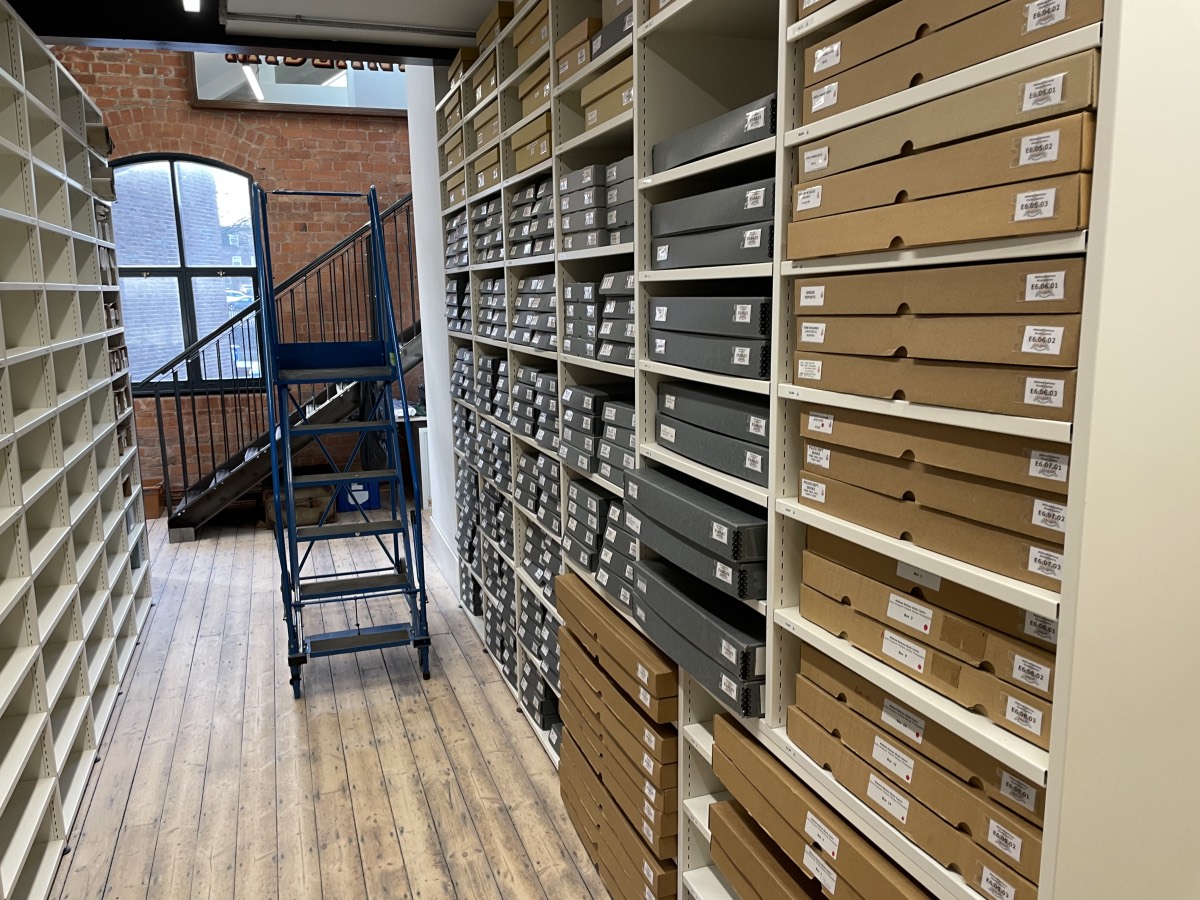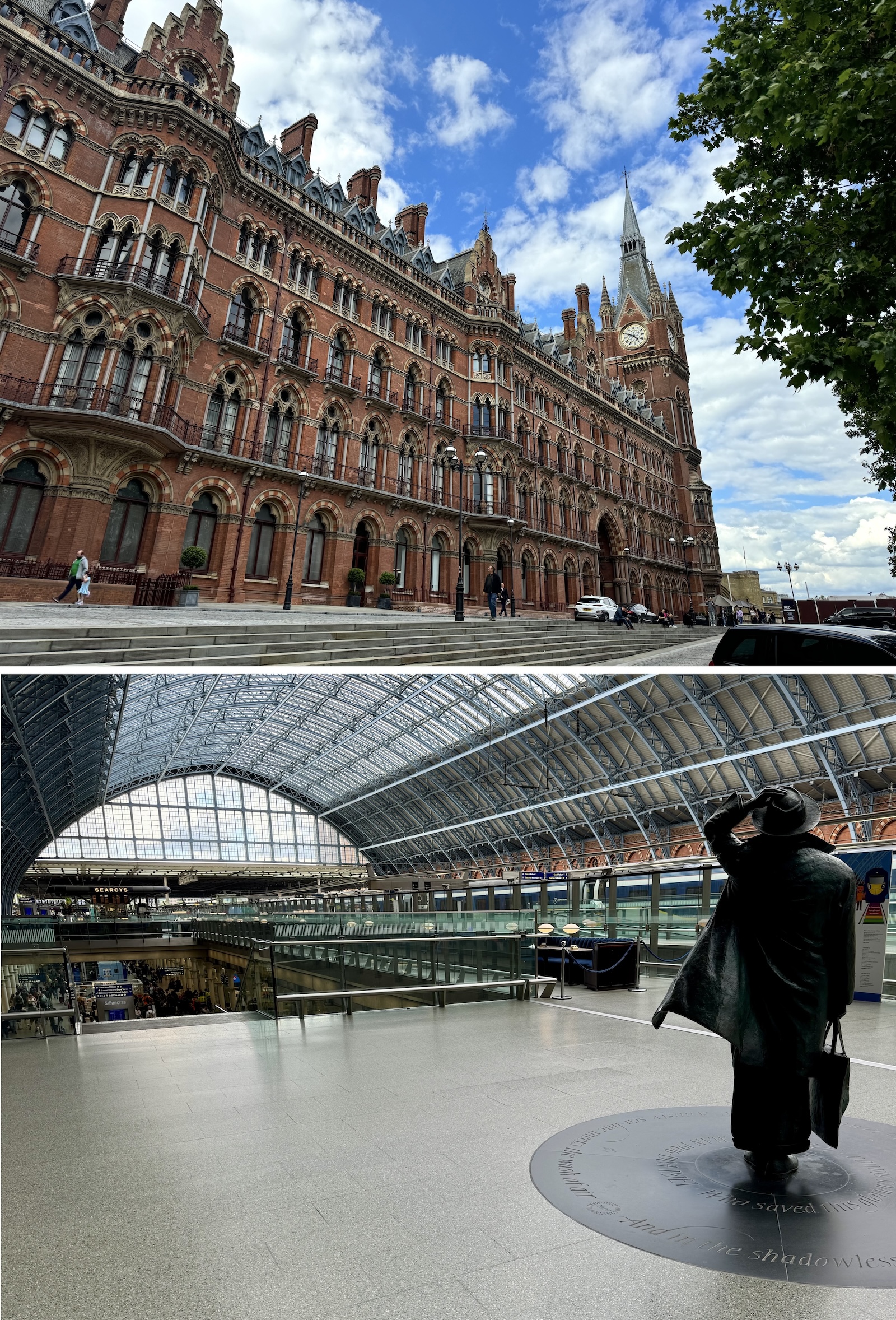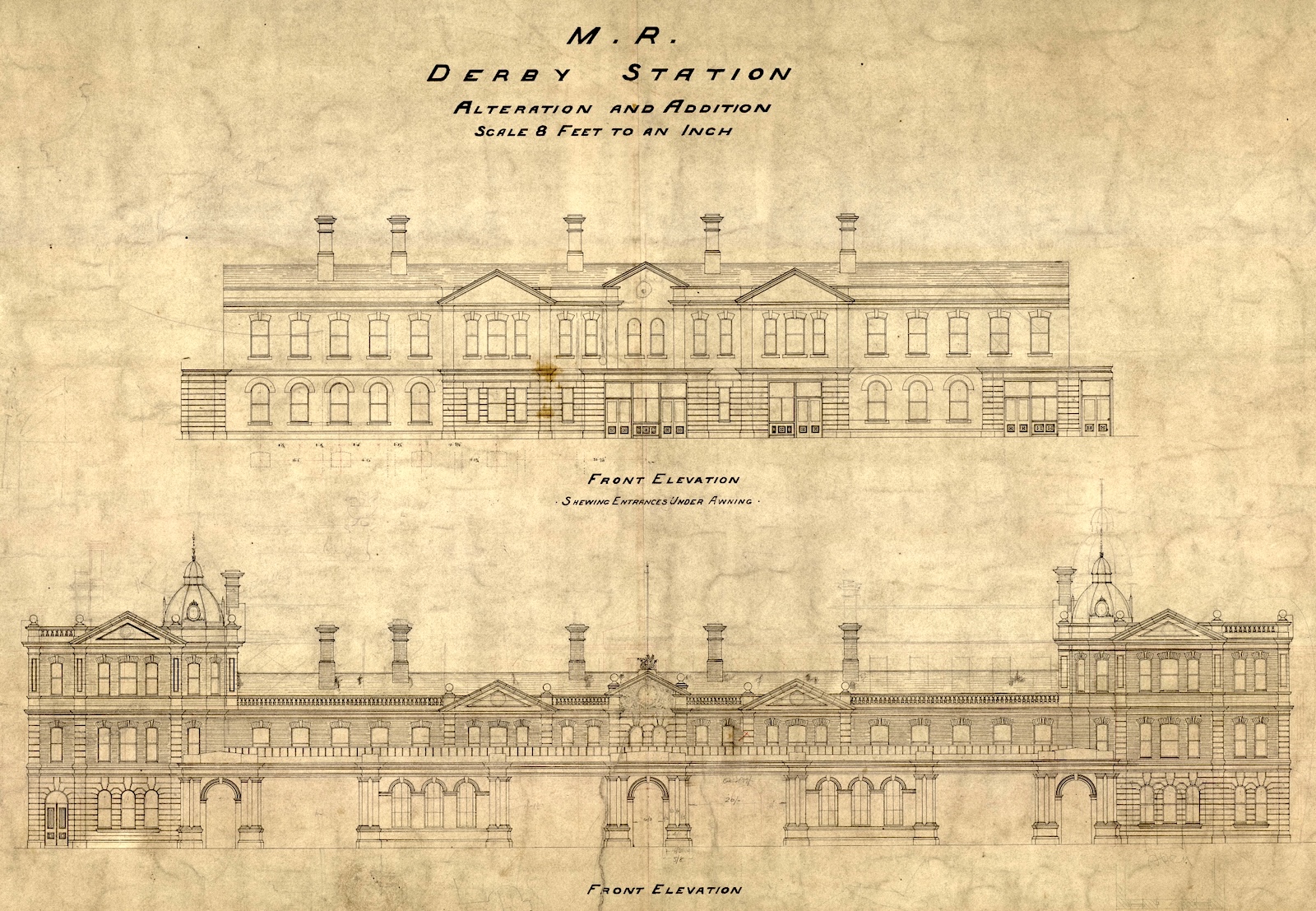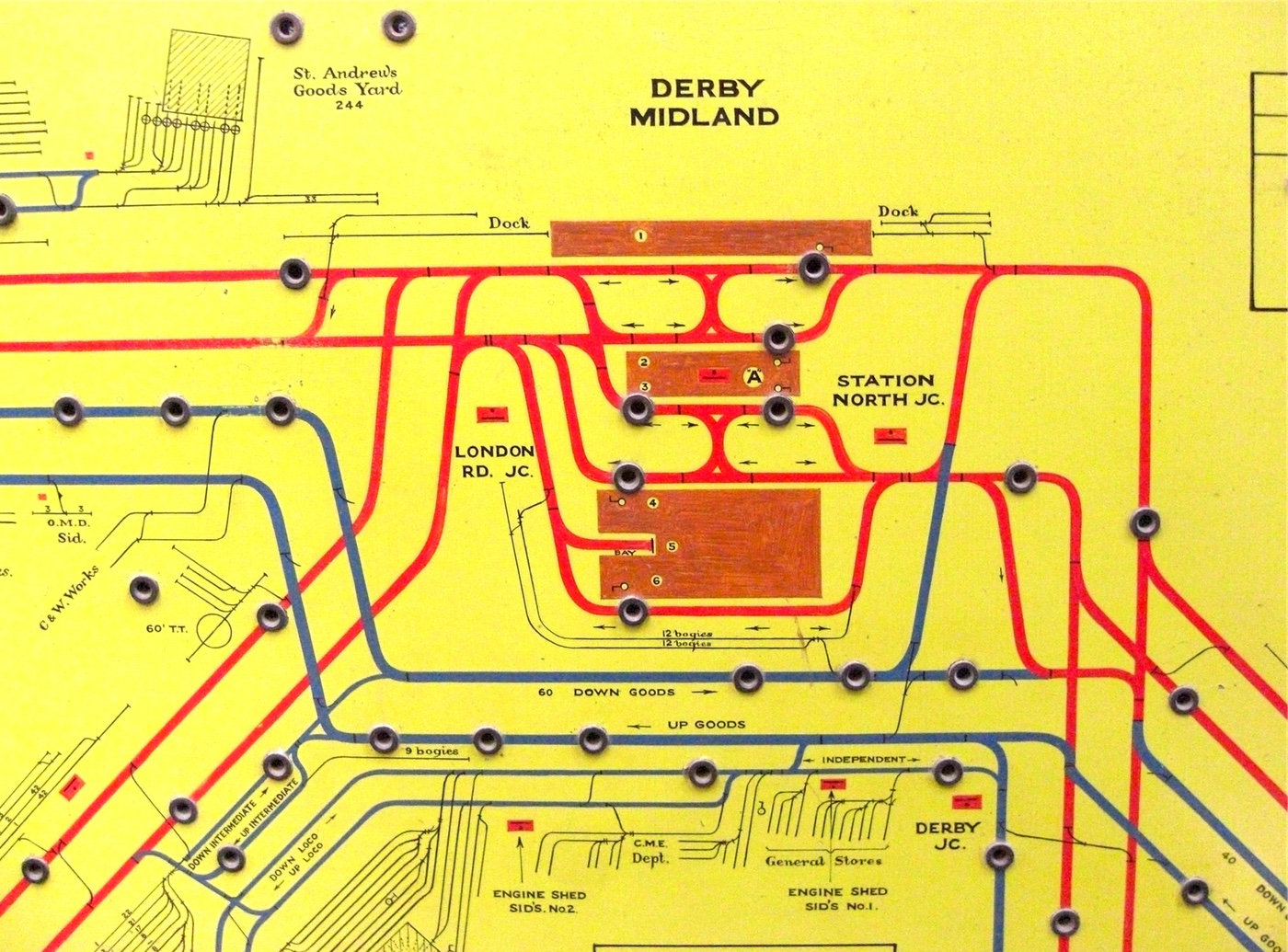THE MIDLAND RAILWAY STUDY CENTRE
Some Resources for Researching
the History of the Midland Railway
If you are looking for an introduction to the Midland Railway — what the Company did (and in some respects continues to do!), how it came into being, where it went, what locomotives and rolling stock it created, who its principal people were — then all that and much more can be found on the Midland Railway Society's web site at:-
www.midlandrailwaysociety.org.uk
What this page, and indeed this whole site, is intended to do is provide you with the means to do more in-depth research into the Midland Railway, its constituents, its joint lines, its successors (up to a point!), its senior staff, its locomotive designers, its civil engineers, architects and architecture, actually its staff of all grades, its signal, its wagons, its timetables, its forms and plethora of other paperwork along with its associate bureaucracy, its timetables (working, public and platform), its hotels, its steamships, its cutlery and silverware, its tools and bobbins, its track and switches and the fences that contain them, its horses and drays and myriad of other road vehicles for transporting goods to and from its customers, the vets that treated them (the horses, not the customers), the Institute and its library, the Mutual Welfare and the Friendly Society, the cricket and football teams, the retirements and presentations and let's not forget the pigeon fanciers. This list is not exhaustive, only exhausting to read!
Research, it is said, it limited only by your imagination. The resources you need are out there somewhere*. We certainly don't have all the answers but we can usually point those who ask in a helpful direction. Much of what we hold has been digitised and so is can be accessible without leaving your comfy chair — though research is always more fun when you do it in person and get chatting with others (handy hint: join the Midland Railway Society!) Not everyone can come to Derby to use the Midland Railway Study Centre in person, and that is where this page comes in
* — This statement may be challenged!

History Research Resources in abundance!
You will no doubt have spotted the links lined across the top of this page detailing the resources we have relating to Places the Midland Railway served, how to research the People who worked for it and what we can do to help Modellers. Here we will dig into some more general areas of Midland Railway Research. So, in no particular order...
The story of how the Midland Railway came into being is in itself fascinating and goes back much further than the formal creation of the Company on 10th May 1844.
That Derby was the centre of all this was purely the result of geography. Early railway locomotives did not perform well on anything but gentle gradients, and so pioneering engineer George Stephenson, whose influence in this matter was universal, surveyed lines that followed river valleys, tunnelling through to the next valley as required (Clay Cross for example). Thus, the general confluence of the Derwent, Trent, Tame and Soar valleys just south of Derby resulted in that town having lines to Leeds, Nottingham, Rugby (via Leicester) and Birmingham. There were three earlier constituent companies each radiating out of Derby:-
Importantly, the last two of those companies were in competition for the lucrative London-bound passenger traffic as Hampton in Arden and Rugby both provided connections with the London and Birmingham Railway — a situation that ultimately led to near financial ruin.
All this and more is contained within an illustrated essay prepared for the 175th Anniversary of the railway coming to Derby in 1839 and a PDF of that can be downloaded here.
This was only the beginning, however, and the Company was to spend much of its existence taking over and absorbing other railways — most quite small affairs that were only just getting going, but some larger enterprises seen as tactical competitors. In their first year, for example, they acquired the putative Erewash Valley Railway Company, and the already well established Sheffield and Rotherham Railway, thus providing a route into Sheffield (the later direct route through the city from Chesterfield wasn't built until 1870 because of the gradients required and Stephenson's long-pervading influence).
It is often said that the Midland Railway had a highly standardised style architecture and when specific lines or periods are studied, there is considerable truth in that statement. However, taking a step back and looking at the Company's works as a whole, there is in fact a wide variation in approach to its buildings. When it comes to the built environment, there is a lot to look at with any railway company but without doubt the most visible buildings are its stations and its signal boxes (about which, more below).
In respect of Midland Railway stations, there are of course several high profile masterpieces and none more so than St. Pancras. Famously the work of William Henry Barlow (1812-1902) who was responsible for engineering the southern end of the “London Extension” (and whom in historical terms, tends to edge-out his colleague Charles Henry Driver (1832-1900) responsible for the geographically much larger northern section), with the stunning creation of George Gilbert Scott in the form of the Midland Grand Hotel at its front.

Less high profile, perhaps, but no less distinctive are the works of Charles Trubshaw (1840-1917) at Derby and Bradford among over 100 others. Nor should we forget Trubshaw's contemporary John Holloway Sanders (1825-1884) — the two men responsible for the Company's Northern and Southern areas respectively.

If there is one area of the Midland Railway that really distinguish the Company from all others, it is its signals and signal boxes. Although they were not early adopters as the railways slowly realised that human frailty was largely to blame for some truly horrific accidents, from the 1870s onwards their first Signal Superintendent, Paul Prince, developed a distinctive style that can still be seen on the national railway network to this day. He was succeeded by his son, also named Paul, and later by such luminaries as Thomas Woodward and Wilfred Cosens Acfield, all of whom stamped their mark on the signalling of the Midland Railway. Throughout the existence of the Midland Railway, the Telegraph Department was always distinctly separate from the Signalling Department. In this area, pioneers such as William Edward Langdon developed pioneering technology designed to enhance the safety of rail travel, culminating in the Company's unique and widely regarded Rotary Interlocking Block instruments.
As with locomotives, coaching and goods stock, the Company's signal boxes underwent several, often subtle, design changes over the years. Whilst in their day they were simply "the current design", in later years enthusiasts have classified and categorised the various styles that appeared. Unlike many of their contemporaries, the aforementioned relative standardisation meant that there are only four broad 'types' of Midland Railway signal box.
Once the Midland Railway had established its signal works at Derby in the 1870s, the Company remained more-or-less self-sufficient for its signalling needs. A notable exception was single line tablet machines which were bought-in from Tyers & Co. The MR developed and manufactured its own interlocking lever frames, utilising a design with the locking behind the levers rather than underneath which, in turn, led to MR signal boxes tending to be smaller, both in height and length than those of other companies. On the Grouping of 1923, the London Midland and Scottish Railway perpetuated much of the Midland's designs until closing the Derby signal works and moving everything to Crewe in the late 1930s.
.jpg)
Looking north from Derby Junction, the line leads right to Chaddesden and ahead toward Ambergate. The Signal Works were located behind the rake of cattle wagons on the left, and the buildings straight ahead formed part of the works, being linked to the main site by a narrow gauge railway running through a subway under the line.
By the early part of the twentieth century, the railways of Britain had grown to what, as things turned out, more-or-less to their zenith. The voracious appetite of industry gobbled-up unimaginable amounts of coal, iron ore and other materials and in return spat out goods and products of bewildering scope and scale — all of which was conveyed by rail. It had become an almost impossible challenge to keep track of all the trains needed to move this traffic, not to mention the having Driver, Fireman and Guard without whom no train could move in the right place at the right moment. To counter this inordinate challenge, the Midland Railway introduced a System of Train Control in 1907.
A complex problem required an equally complex system to manage it and this took the form of regional Control Offices and a network of telephones by which signalman would feed-in information about where all the trains were. Sub-controllers responsible for train crews, engine allocations and goods stock utilisation, along with 'back room' input such as timetable planning, all combined to process this information for the Controller. With this overview, the messages were sent back to the signalmen for them to 'regulate' trains (i.e. stop them or allow them to proceed as appropriate) so as to make best use of those combined resources — all the while ensuring the goods got to where they were meant to be for the paying customers as efficiently as possible. Simple?

A part of the British Railways era Control Board for Derby. This is on display in the Kirtley Museum building at Midland Railway - Butterley
Meanwhile, to provide a visual aid for the Controllers, a large diagrammatic representation of the railway lines and sidings in their area was provided. On that board were multiple holes for pegs, attached to which were cards that details the trains, engines, crews and standing rakes of wagons. This afforded the Controller an immediate overview of how the railway was running and immediately highlighted any bottlenecks. The system was such a success, tried and very robustly tested through two World Wars which pushed the railways well past their nominal limit. It was only with the coming of rudimentary computers and machine-based aids that the system pioneered was superseded in the 1970s.
The Midland Railway Society are producing an expanded reprint of the Midland Railway's original Train Control Instructions booklet of 1909. With modern interpretation and a retrospective analysis, this copiously illustrated booklet provides an accessible insight into this rarely seen world of railway operation. Copies will be available for purchased from the Midland Railway Society's online shop very soon.